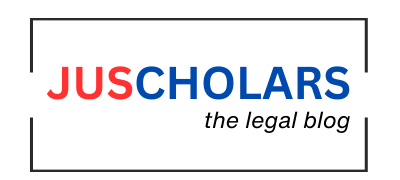Abstract
The rapid proliferation of social media platforms has revolutionized the way people communicate, express opinions, and disseminate information. However, it has also brought new legal challenges and complexities concerning freedom of expression. This article explores the evolving landscape of free speech in the digital age, focusing on its legal implications, the necessity of restrictions, and the infringement of existing laws.
Drawing on case laws and legislative frameworks from India and other democracies, the article analyzes how courts and lawmakers are balancing the right to free speech with the need to maintain public order, prevent hate speech, and ensure national security. The article concludes by suggesting a way forward for regulating online expression while preserving democratic values.
Introduction
Freedom of expression is a cornerstone of democratic societies, enshrined in constitutional texts and international human rights instruments. In India, Article 19(1)(a) of the Constitution guarantees the right to freedom of speech and expression to all citizens. With the advent of social media platforms like Facebook, Twitter, Instagram, and YouTube, the landscape of public discourse has shifted dramatically.
These platforms empower individuals to voice opinions, mobilize communities, and challenge authority, but they also facilitate the rapid spread of misinformation, hate speech, and defamation. The digital sphere has blurred the boundaries between private and public expression, complicating legal interpretations and enforcement. As a result, questions about the limits of free speech and the responsibilities of online platforms have become central to legal and policy.
The right to freedom of speech and expression is guaranteed under Article 19(1)(a) of the Indian Constitution, but it is subject to reasonable restrictions under Article 19(2). These include interests of the sovereignty and integrity of India, the security of the state, public order, decency or morality, and contempt of court, defamation or incitement to an offence.
The Information Technology Act, 2000, specifically Section 66A (struck down in Shreya Singhal v. Union of India, (2015) 5 SCC 1), dealt with offensive messages through communication services, which was declared unconstitutional for being vague and chilling free speech. The IT Rules, 2021, now govern intermediaries and digital platforms, requiring them to remove unlawful content and cooperate with law enforcement. These laws impose obligations on social media companies to regulate user content while raising concerns about overreach and censorship.
Need for Restriction
While freedom of expression is vital to democracy, it is not absolute. Restrictions are necessary to prevent harm such as incitement to violence, communal hatred, and misinformation that can lead to real-world consequences. The viral nature of content on social media can amplify harmful speech and make it difficult to control. For instance, during the COVID-19 pandemic and political movements like the farmers’ protests, misinformation and provocative posts spread rapidly, prompting government interventions. Such instances highlight the need for a regulatory framework that balances free speech with public interest and national security. Courts have consistently upheld that reasonable restrictions are permissible to maintain societal harmony.
Infringement of Law and Judicial Response
Numerous cases reflect the tension between free speech and law enforcement in the digital age. In Shreya Singhal v. Union of India, the Supreme Court struck down Section 66A of the IT Act for violating Article 19(1)(a), emphasizing that mere annoyance or inconvenience cannot be grounds for curbing speech. In Anuradha Bhasin v. Union of India, (2020) 3 SCC 637, the Court recognized internet access as a component of free speech and stressed that restrictions must be proportionate and necessary.
Similarly, in the case of Amish Devgan v. Union of India, (2021) 1 SCC 1, the Supreme Court held that hate speech cannot be protected under free speech and that a balance must be struck between individual rights and social order. These rulings underscore the judiciary’s evolving approach to freedom of expression in the digital domain, advocating a nuanced and rights-based interpretation.
Conclusion
The evolution of social media has significantly transformed how freedom of expression is exercised and regulated. While it has empowered individuals and democratized information, it has also posed serious challenges for law enforcement and policy makers. The judiciary has played a crucial role in interpreting constitutional freedoms in light of technological advancements, yet the debate over the scope and limits of online speech remains unresolved. A collaborative approach involving the state, judiciary, civil society, and tech companies is needed to ensure that the digital space remains free, fair, and safe.
Way Forward
To address the legal challenges posed by social media, India must develop a robust and transparent regulatory framework. This should include clear definitions of unlawful content, due process for content takedown, and accountability mechanisms for platforms. Enhancing digital literacy and promoting self-regulation among tech companies can also help mitigate misuse. Judicial oversight and adherence to constitutional principles must guide any restrictions on speech. Finally, there must be a concerted effort to harmonize national laws with international human rights standards, ensuring that the right to free expression is protected even as society navigates the complexities of the digital age.
Case Laws and Citations
1. Shreya Singhal v. Union of India, (2015) 5 SCC 1
2. Anuradha Bhasin v. Union of India, (2020) 3 SCC 637
3. Amish Devgan v. Union of India, (2021) 1 SCC 1
References
1. The Constitution of India, Article 19
2. Information Technology Act, 2000
3. Information Technology (Intermediary Guidelines and Digital Media Ethics Code) Rules, 2021
4. Basu, Durga Das. *Commentary on the Constitution of India*, LexisNexis, 2020
5. Singh, P.P. *Cyber Law in India*, Eastern Book Company, 2021
Author: Gunjan Pachauri is a BA.LL.B( hons.) student.






